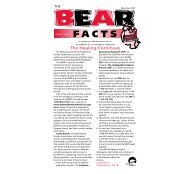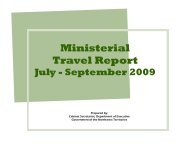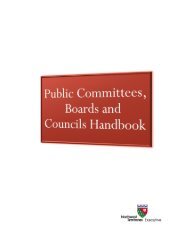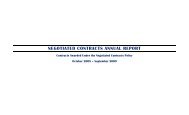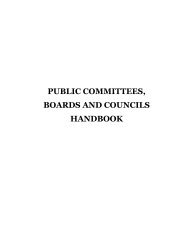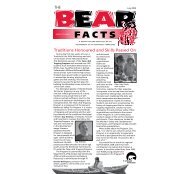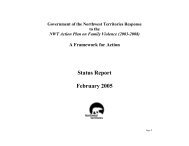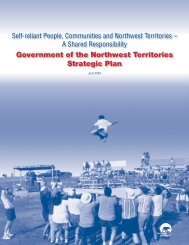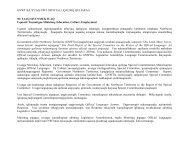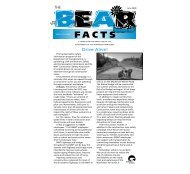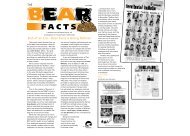Act Now - The Report of the WCB Legislative Review Panel to the
Act Now - The Report of the WCB Legislative Review Panel to the
Act Now - The Report of the WCB Legislative Review Panel to the
- No tags were found...
Create successful ePaper yourself
Turn your PDF publications into a flip-book with our unique Google optimized e-Paper software.
STAKEHOLDER QUESTIONNAIRE AND SUMMARY OF RESPONSESi) If yes <strong>to</strong> (g), should <strong>the</strong> time limit be extended if <strong>the</strong>reare circumstances beyond a worker’s or employer’scontrol that s<strong>to</strong>p <strong>the</strong>m from being prepared for an appealshearing within <strong>the</strong> time limit?j) Should <strong>the</strong>re be a time limit on when <strong>the</strong> AppealsTribunal must make a decision and complete its reportafter a hearing(s) is completed?Yes = 83No = 8Yes = 92No = 0k) If yes <strong>to</strong> (j), how long? 2 Weeks = 191 Month = 312 Months = 183 Months = 14More than 3 Months and less than 6 Months = 1118. <strong>The</strong>re is no time limit on how quickly <strong>the</strong> <strong>WCB</strong> must act on a decision <strong>of</strong> <strong>the</strong> Appeals Tribunal.a) Should <strong>the</strong> <strong>WCB</strong> have <strong>to</strong> implement a decision <strong>of</strong> <strong>the</strong>Appeals Tribunal within a certain period <strong>of</strong> time?Yes = 97No = 1b) If yes <strong>to</strong> (a), how long? Less than 1 Month =351 Month = 242 Months = 73 Months = 22More than 3 Months = 7c) If <strong>the</strong> Appeals Tribunal filed its decision with a law courtin <strong>the</strong> NWT or Nunavut would this help <strong>to</strong> ensure <strong>the</strong><strong>WCB</strong> followed decisions <strong>of</strong> <strong>the</strong> Appeals Tribunal?Yes = 62No = 24Compensation19. Workers who are hurt on <strong>the</strong> job and have <strong>to</strong> miss work without pay for a short time get money as compensation from <strong>the</strong> <strong>WCB</strong>.Paying compensation when a worker cannot be at work because <strong>of</strong> <strong>the</strong>ir injury, and is not being paid by <strong>the</strong>ir employer, is called a “wageloss” approach. <strong>The</strong> way compensation is paid is different when an injured worker is permanently disabled because <strong>of</strong> an injury on <strong>the</strong> jobor has an ongoing illness because <strong>of</strong> <strong>the</strong>ir work. <strong>The</strong>n <strong>the</strong> money is paid as a permanent pension and is based on <strong>the</strong> worker’s disability orillness. In o<strong>the</strong>r words, ongoing pensions are based on a “disability or impairment” approach. <strong>The</strong> amount <strong>of</strong> an injured worker’s wages isonly one <strong>of</strong> <strong>the</strong> fac<strong>to</strong>rs used in deciding how much <strong>the</strong> permanent compensation (<strong>the</strong> pension) will be.Appendix C Page C12 <strong>of</strong> C33<strong>WCB</strong> <strong>Legislative</strong> <strong>Review</strong> <strong>Panel</strong> <strong>Report</strong> December, 2001



